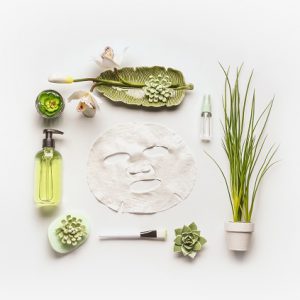By Jen Johnston, senior marketing services account manager, as seen in Mass Market Retailers
The term ŌĆ£clean labelŌĆØ has been bouncing around since at least 2010. Originally the term described foods and drinks that contained fewer ŌĆö and ŌĆ£cleanerŌĆØ ŌĆö ┬Łingredients.
This emphasis on clean ingredients has spilled over into beauty. Research by Linkage Research & Consulting shows 72% of skin care consumers agree their skin is just like any other organ, so it should not be surprising that 50% of them are seeking skin care products that are ŌĆ£all naturalŌĆØ and ŌĆ£free of synthetic chemicals.ŌĆØ Further, 61% of consumers believe their hair care products can impact their overall health.
Millennial women are leading the push, with a Harris poll showing that 73% of them would like cleaner, greener beauty choices. But other generations are on board as well. In fact, 28% of baby boomers and 28% of Gen X consumers report buying more natural skin care products than they were a year ago, and 49% of Gen Z consumers want to know what is in the beauty products they buy, reports Linkage ┬ŁResearch.
Retailers are responding. The Clean at Sephora initiative launched in 2018 with 61 brands that are free of 13 controversial ingredients. In July 2019, the companyŌĆÖs ŌĆ£formulated withoutŌĆØ list increased to more than 50 banned ingredients, with the number of qualifying brands increasing to 68.
The retailer also released a public-facing chemicals policy over the summer, making Sephora USA Inc. the first major specialty beauty retailer to have one.
Target Corp., on the other hand, has had a chemical policy in place since 2017, but just recently stepped up its clean beauty game. Beauty and essentials represent 24% of TargetŌĆÖs total sales, and the 30+ ŌĆ£Target CleanŌĆØ brands will now be prominently displayed in dedicated end-caps. Target Clean is one of a handful of other wellness icons that can help shoppers identify whether a beauty or personal care product is cruelty free, nontoxic, plant-based, vegan or free from dye.
 Beauty is QVCŌĆÖs second-largest merchandise segment. During summer 2019, QVC and HSN launched clean beauty seals with very specific standards that qualifying brands must meet, including the absence of such ingredients as sulfates, parabens, triclosan, coal tar, talc, aluminum, phthalates, petrolatum, mineral oil and formaldehydes, among others. Upon launch, seven brands qualified for the seal, though the portfolio is expected to grow.
Beauty is QVCŌĆÖs second-largest merchandise segment. During summer 2019, QVC and HSN launched clean beauty seals with very specific standards that qualifying brands must meet, including the absence of such ingredients as sulfates, parabens, triclosan, coal tar, talc, aluminum, phthalates, petrolatum, mineral oil and formaldehydes, among others. Upon launch, seven brands qualified for the seal, though the portfolio is expected to grow.
Nordstrom was an early adopter, opening ŌĆ£natural beauty out-postsŌĆØ in many of its stores in 2017 and even including clean, indie brands in one of its Pop-in@Nord┬Łstrom pop-up shops earlier this year. Nord┬Łstrom Natural Beauty features products that are free from parabens, sulfates and phthalates.
Clean Beauty is often considered synonymous with indie beauty brands, and in many cases that is true. However, mainstream brands are also getting in on the action either by acquisition ŌĆö as in the case of UnlieverŌĆÖs 2017 purchase of SheaMoisture and its forthcoming purchase of Tatcha ŌĆö or by developing its own ŌĆ£indie-esqueŌĆØ lines, such as LŌĆÖOr├®alŌĆÖs Seed Phytonutrients or UnileverŌĆÖs Love Beauty and Planet.
Research by┬ĀHamacher┬ĀResource Group uncovered that two of the top-five categories that are using ŌĆ£better-for-youŌĆØ positioning statements in their new items are hair care and skin care, so the mainstream health, beauty and wellness industry is definitely beginning to catch up.
Watchdog groups such as the Campaign for Safe Cosmetics are helping to educate consumers on chemicals used in personal care products that are linked to adverse health impacts and also putting pressure on brands to adapt.
Innovative startups such as Think Dirty are doing more than educate, they are empowering consumers at shelf. The Think Dirty app contains 1.1 million products and allows shoppers to scan and shop cleaner options. They also have a curated beauty box with verified clean products.
Clean beauty is proving itself to be more than a passing fad. Brands and retailers would be wise to follow the lead of those who have taken the first steps into meeting this consumer demand over the past two years.

